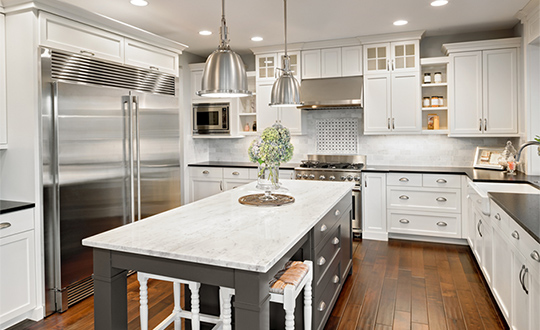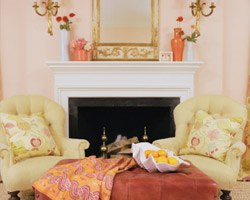Fabulous design. Cutting edge looks. Interesting twists in color, fabric, and texture. These are all elements inherent in design that's ecologically sound. Yes, your creativity can have free reign even as you make choices that help protect the planet. Increasingly, manufacturers are creating products that have minimal impact on the environment, whether because they're made from organically-grown cotton or because they're made with renewable resources. We think environmentally friendly design is so important that we recently added a Green Design lesson to the NYIAD Complete Course in Interior Design.
In our "Decorating Green" column we'll look at a sustainable, low-impact element of design in each issue of "Designer Monthly." We hope these articles will help us all help the planet and the many creatures that share it with us.
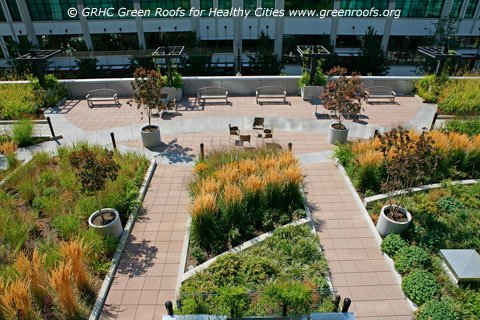
Imagine this possible scenario in the future — green rooftops stretching across city skylines and green walls climbing up to meet blue skies, resembling a verdant mountainside. No, it's not science fiction but one day it could be reality.
Architects, engineers and designers have long focused on employing environmentally-friendly building materials and energy-efficient systems but they only dealt with the interior or the building itself — rarely the outside. In recent years, studies have come out showing the advantages of creating green roofs on top of buildings. Green roofs reduce the overall temperature of a building, thereby easing the need for air conditioning. They provide storm water management by reducing water runoff and capturing the rain water in plant life. Green roofs also protect conventional roofs and double its life.
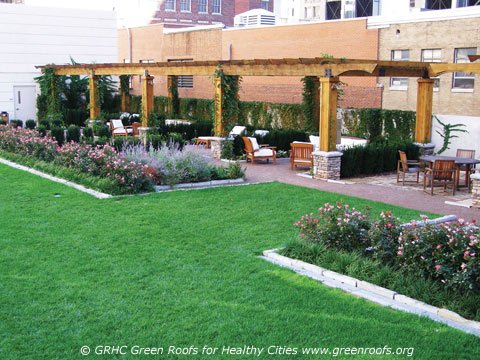
In addition, the combination of layers of plant life, filtration membranes and thermal insulation together serve as sound insulation and protect building inhabitants from noise pollution. Finally, if enough buildings in the city adopt a green roof approach, together the resulting effect can reduce the "heat island" effect of cities. The following are examples of roof gardens on residential high-rise apartments, 909 Walnut luxury building is in Kansas City, Missouri and The Louisa high-rise is located in downtown Portland, Oregon.
What exactly is a green roof? Or even a green wall? A green roof can be as simple as providing containers of plant life on an existing roof or as extensive as building a green roof system. A green roof system provides modules of a waterproof layer, a root barrier, a drainage layer, filter membrane, growing medium such as soil, and plant life. These modules can be moderate in size and be moved around or they can cover the whole roof.
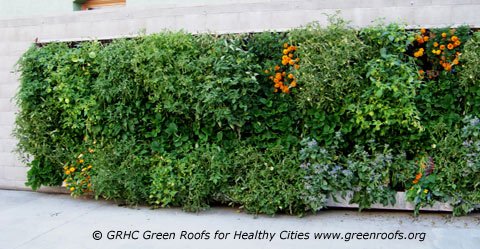
A green wall is a wall system that has climbing plants or cascading groundcovers trained to cover the sides of a building. Another type of green wall may be made of panels with pre-attached vegetation and growing mediums. Green walls have already been popular in Asian and Europe and are starting to appear in the U.S. In Los Angeles, Green Living Technologies helped create this edible-green wall for the Urban Farming Food Chain. Vegetables and fruits such as tomatoes, strawberries, lettuce, and peppers have been harvested from the green wall. The project is also spreading to other cities including New York, Detroit, Las Vegas, and Rochester.
The city of Seattle has been aggressive in adopting green practices and instituted in 2007 a landscaping ordinance to require all developers in business districts to provide a certain level of greenery — including green walls, green roofs, and/or large trees.
Chicago is actually the leading city in the U.S. in installation of green roofs with some 535,000 square feet. Other cities include New York, Washington D.C., Philadelphia, Seattle, and outside the U.S. — Vancouver and Montreal. The cost of installing a green roof ranges anywhere from $15-$25 a square foot depending on the complexity of the roof module. Below are examples of a roof garden installed on the Schwab Rehabilitation Hospital roof in Chicago, Illinois.
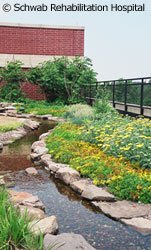
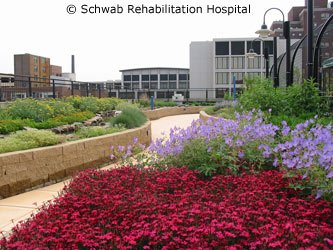
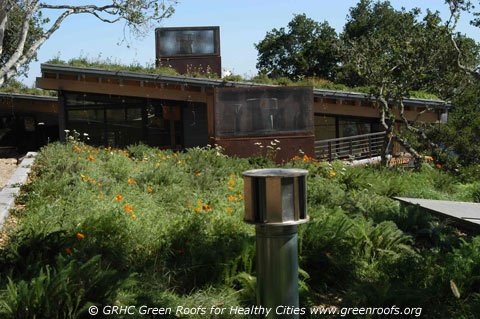
While many roofs are located on commercial space, many individuals in residential buildings have initiated their own green roofs. To create your own green roof, the first step is to verify whether regulations permit installation of a roof garden (if you're in a rental space or in a condo/co-op association). If you have the green light then the next step is to determine if your roof has the structural capacity to hold the additional load of a roof garden. An architect or a contractor should be hired to establish this capacity. Next consult with a landscaper or a gardening facility to determine the materials needed and the appropriate plant life to grow. Keep in mind that your garden is on an elevated space and therefore will need some windbreakers for protection such as trellises. Lastly, a watering method needs to be chosen, such as a drip irrigation system or even just a garden hose for smaller plots. This photograph is an example of a residential roof garden called the Feldman Residence, part of the Santa Lucia Preserve in Carmel, California.
Besides the environmental and economical advantages, a green roof provides a beautiful asset to your building. The greenery connects you back to nature and provides a relaxing retreat without leaving your home.


